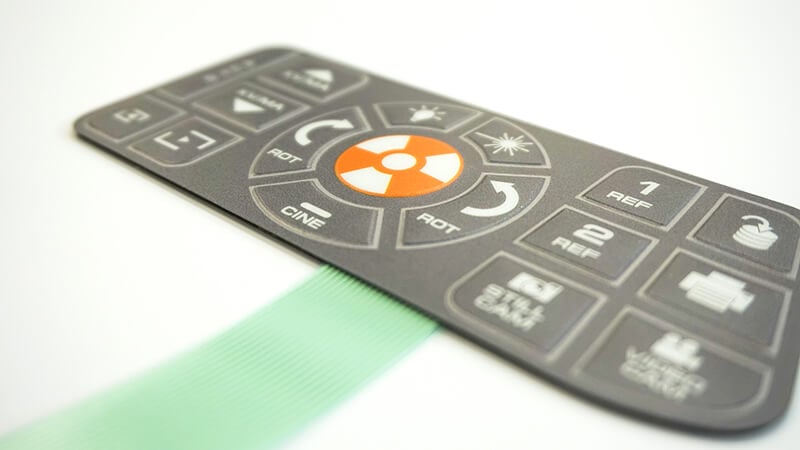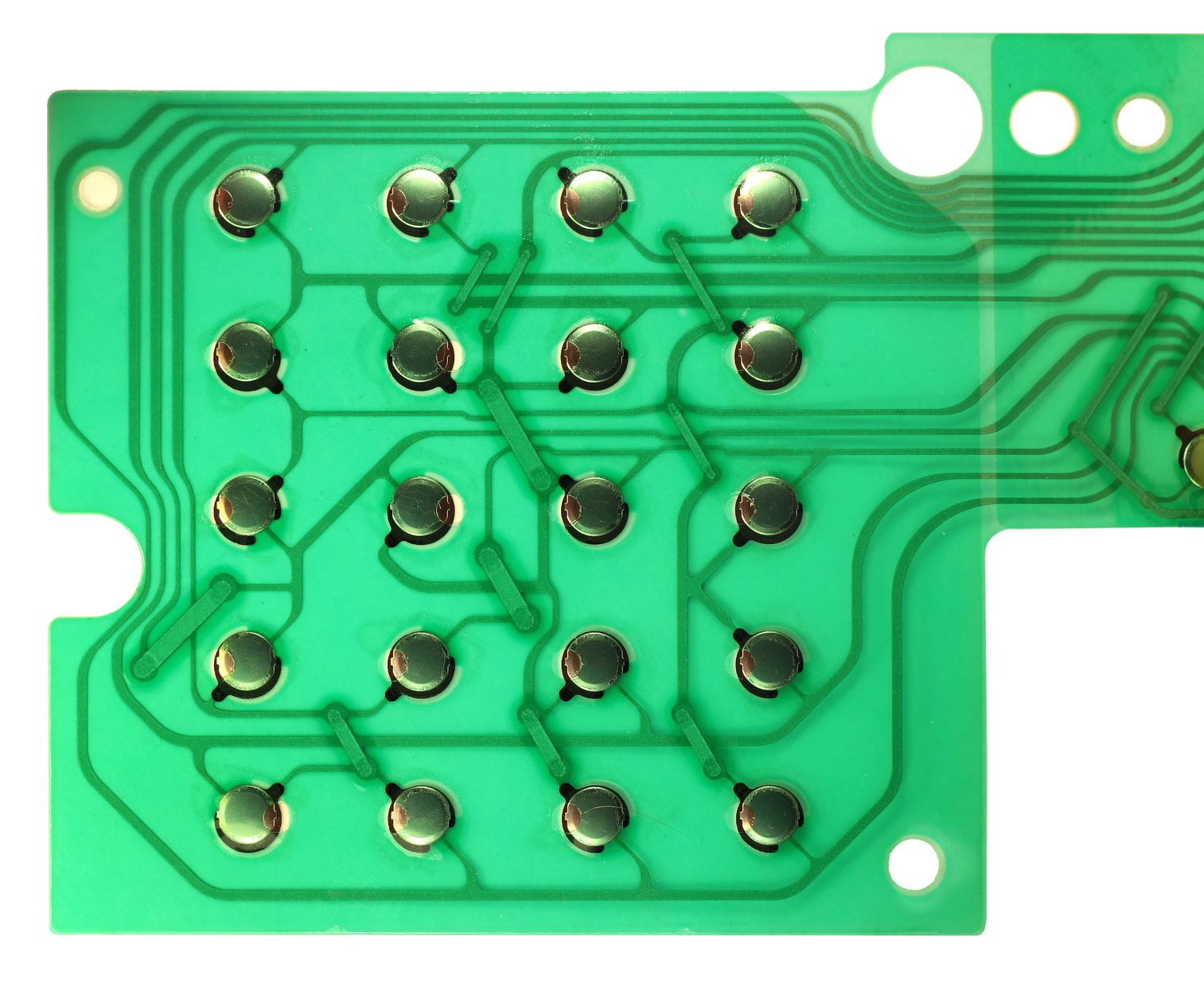Discover Various Types of Membrane Switch Technologies for Your Demands
Discover Various Types of Membrane Switch Technologies for Your Demands
Blog Article
How Membrane Changes Add To the Durability of Electronic Control Panels
Membrane buttons play a crucial role in improving the resilience of digital control panels, primarily through their multi-layered construction which supplies reliable defense versus ecological variables such as wetness and dust. The lack of relocating parts considerably decreases the chance of mechanical failures, making membrane layer switches suitable for requiring applications.
Interpretation of Membrane Layer Switches

Membrane buttons are developed to be thin and light-weight, making them ideal for applications where room is restricted. They can be produced in numerous forms, dimensions, and colors, supplying flexibility in design that meets visual and useful demands. Furthermore, membrane layer buttons can incorporate various innovations, such as tactile responses and LED indicators, boosting individual experience.
Due to their building and construction, membrane buttons are commonly immune to dust, dampness, and basic wear, adding to their longevity in demanding atmospheres. Their smooth layout not just promotes simple cleansing yet also minimizes the risk of mechanical failing, making them a recommended option for manufacturers seeking trusted individual interfaces in their digital control panels.
Defense Versus Environmental Factors
The style of membrane switches naturally provides a degree of defense versus various ecological elements, which is essential for keeping performance in difficult conditions - Membrane Switch. These switches are generally built with layers of adaptable materials that secure inner parts from moisture, dirt, and contaminants. By encapsulating the circuitry, membrane switches minimize the danger of brief circuits and rust, which can dramatically impair performance
Furthermore, using robust adhesives and sealers during manufacturing boosts their resistance to ecological obstacles. Membrane switches can endure direct exposure to chemicals and solvents, making them suitable for markets such as food processing and medical care, where health and tidiness are paramount. Their seamless surface area design likewise prevents the build-up of dust and bacteria, promoting simpler cleansing and maintenance.
Temperature level changes are an additional ecological concern, and membrane layer buttons are crafted to operate properly across a variety of temperature levels (Membrane Switch). This versatility guarantees that control board remain operational in various settings, from industrial settings to customer electronics
Influence on Individual Communication
User communication with electronic control panels is significantly influenced by the layout and capability of membrane layer switches. These switches provide a tactile interface that improves the total individual experience, permitting intuitive navigation and control. Their responsive nature guarantees that individuals get instant responses upon activation, which is essential for tasks requiring accuracy and effectiveness.
Moreover, the smooth surface area of membrane layer switches over assists in very easy cleansing informative post and upkeep, advertising individual self-confidence in the integrity of the user interface. This sanitation is specifically essential in atmospheres where hygiene is paramount, such as clinical or food processing settings. In addition, the compact and light-weight design of membrane switches contributes to the aesthetic appeal of control panels, encouraging user involvement via a modern-day and smooth appearance.
Additionally, the integration of visual elements, such as printed icons and backlighting, assists customers rapidly identify features, reducing the discovering contour connected with new tools. Consequently, customers can operate tools a lot more properly, bring about enhanced performance and fulfillment. In recap, membrane buttons play an essential duty in enhancing individual communication by integrating functionality, aesthetic appeals, and simplicity of use, eventually leading to improved functional efficiency.
Design Adaptability and Personalization
Layout flexibility and modification are vital aspects of membrane layer buttons, making it possible for makers to tailor electronic control board to certain applications and individual requirements. This adaptability enables the combination of numerous layout elements, such as colors, graphics, and structures, which can improve the visual charm and individual engagement of the control board.
Membrane layer buttons can be tailored in shapes and size, fitting a vast array of tools and applications, from commercial equipment to consumer electronics. This versatility makes sure that suppliers can develop instinctive interfaces that line up with individual assumptions and functional demands. Furthermore, the capability to integrate unique attributes such as backlighting or tactile responses even more improves webpage functionality, allowing for a more interactive experience.
Moreover, the manufacturing procedure for membrane layer switches supports the quick prototyping of designs, allowing makers to repeat and refine their ideas promptly. This ability not only speeds up the growth timeline yet likewise guarantees that the last item meets details practical and visual criteria.

Cost-Effectiveness and Longevity
Cost-effectiveness and longevity are significant advantages of membrane buttons, making them an eye-catching alternative for manufacturers and end-users alike. These switches are typically less pricey to create than standard mechanical switches, primarily because of their streamlined production procedures and the minimized number of elements needed. This expense advantage expands not only to preliminary manufacturing however likewise to long-term operational expenses, as membrane switches usually call for less maintenance and have a reduced failing price.
Additionally, the long life of membrane switches over contributes click site to their general value. Created from sturdy materials, they are immune to environmental variables such as wetness, dirt, and chemicals, which can bring about premature wear in other switch types. The lack of relocating parts decreases mechanical failure, permitting membrane changes to maintain performance over prolonged durations.
This longevity is specifically advantageous in applications calling for consistent performance under requiring conditions, such as medical devices and commercial tools. Inevitably, the mix of cost-effectiveness and longevity makes membrane layer switches a financially practical selection for manufacturers, giving dependable solutions that hold up against the examination of time while maximizing monetary considerations.
Verdict
Finally, membrane layer switches considerably boost the durability of electronic control board through their robust building and protective functions. By successfully protecting wiring from ecological hazards and reducing the threat of mechanical failure, these switches ensure constant efficiency in requiring applications. The seamless style advertises health and ease of upkeep, while customization choices make it possible for tailored remedies for different requirements. Generally, membrane layer switches over stand for a reliable and affordable option for improving the long life and capability of electronic control systems.
Report this page